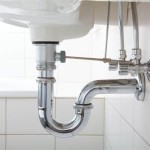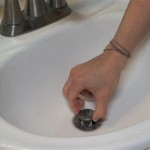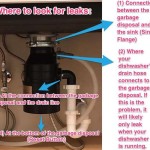Undermount Sinks in Laminate Worktops: A Comprehensive Guide
The integration of an undermount sink into a laminate worktop is a design choice that blends functionality with aesthetic appeal. Unlike traditional drop-in sinks that sit on top of the countertop, undermount sinks are installed beneath the counter, creating a seamless and clean look. This configuration offers several advantages, including ease of cleaning and a more modern appearance. However, installing an undermount sink in a laminate worktop presents unique challenges that must be carefully considered.
Laminate worktops consist of a particleboard or MDF core covered with a decorative laminate layer. While durable, they are not as water-resistant as solid surface materials like granite or quartz. Therefore, a robust sealing strategy is crucial to prevent water damage to the core of the laminate countertop when installing an undermount sink. This article will provide a detailed exploration of the key considerations, installation techniques, and maintenance practices associated with undermount sinks in laminate worktops.
Key Considerations Before Installation
Before embarking on the installation of an undermount sink in a laminate worktop, several factors need to be addressed to ensure a successful and long-lasting outcome. These considerations range from assessing the suitability of the laminate worktop itself to selecting the appropriate sink and installation materials.
1. Assessing the Laminate Worktop: The quality and thickness of the laminate worktop are paramount. A thinner laminate worktop may lack the structural integrity required to support the weight of the sink and the constant strain from water and everyday use. Ideally, the laminate worktop should be at least 38mm (approximately 1.5 inches) thick. Examining the core material is also critical. A high-density particleboard or MDF core will offer better resistance to moisture and provide a more stable base for the sink installation. Inspect the edges of the worktop for any signs of damage or delamination, as these can compromise the integrity of the installation. If the worktop shows signs of significant wear or water damage, it might be more prudent to replace it entirely before installing an undermount sink.
2. Sink Selection: The choice of sink is another critical factor. Stainless steel sinks are a popular choice due to their durability, resistance to corrosion, and affordability. However, the weight of the sink should be carefully considered. A heavier sink will place more stress on the laminate worktop and the adhesive bond. Consider the sink's dimensions in relation to the worktop's size. Ensure there is sufficient clearance around the sink for faucets, sprayers, and other accessories. The sink's bowl depth also matters, as a very deep bowl may limit the usable space beneath the sink. Look for sinks specifically designed for undermount installation, as these typically have a wider flange to provide a greater surface area for adhesion.
3. Sealing Strategy: The most crucial aspect of installing an undermount sink in a laminate worktop is establishing a watertight seal. Laminate is inherently susceptible to water damage, so meticulous sealing is essential to prevent moisture from penetrating the core material. High-quality, waterproof silicone sealant is the primary defense against water intrusion. Select a sealant that is specifically formulated for kitchen and bathroom applications, as these typically contain mildew inhibitors to prevent mold growth. The sealant must be applied liberally and evenly to all exposed edges of the laminate around the sink cutout. Multiple layers of sealant may be necessary to create a robust and impermeable barrier.
4. Support Structure: Given the inherent limitations of laminate in supporting weight, a supplementary support structure is often necessary. This can take the form of wooden braces, metal brackets, or even a custom-built support frame. The support structure should be securely attached to the underside of the worktop and should bear the weight of the sink, relieving stress on the adhesive bond. The type of support structure will depend on the size and weight of the sink, as well as the specific design of the cabinet below.
5. Professional Installation vs. DIY: Installing an undermount sink in a laminate worktop is a challenging project that requires precision and expertise. If you lack experience in plumbing, carpentry, or countertop installation, it is strongly recommended to hire a qualified professional. A professional installer will have the necessary tools, skills, and knowledge to ensure a proper and watertight installation. Attempting a DIY installation without the requisite skills can lead to costly mistakes, including water damage to the worktop and the surrounding cabinetry.
Installation Techniques: A Step-by-Step Guide
While professional installation is often recommended, understanding the installation process can provide valuable insight into the complexities involved. This section outlines the essential steps involved in installing an undermount sink in a laminate worktop.
1. Preparation: Begin by carefully measuring and marking the sink cutout on the underside of the laminate worktop. Use the sink's template as a guide to ensure accurate placement. Before cutting, double-check all measurements to avoid costly errors. Protect the work surface with drop cloths or plastic sheeting to prevent scratches and damage. Gather all necessary tools and materials, including a jigsaw, drill, silicone sealant, caulk gun, sandpaper, clamps, and safety glasses.
2. Cutting the Sink Opening: Using a jigsaw, carefully cut along the marked lines to create the sink opening. Start with a pilot hole drilled near a corner of the cutout. Ensure the jigsaw blade is appropriate for cutting laminate to prevent chipping or splintering. Cut slowly and steadily, following the lines as accurately as possible. Once the cutout is complete, smooth the edges with sandpaper to remove any sharp edges or imperfections. Thoroughly clean the cut edges with a damp cloth to remove any dust or debris.
3. Sealing the Cut Edges: This is arguably the most critical step in the entire process. Apply a generous bead of waterproof silicone sealant to all exposed edges of the laminate around the sink cutout. Ensure the sealant penetrates deeply into the core material to create a robust barrier against moisture. Use a gloved finger or a sealant smoothing tool to create a smooth and even surface. Allow the sealant to cure completely according to the manufacturer's instructions before proceeding to the next step.
4. Attaching the Sink: Apply a thick bead of silicone sealant to the underside of the sink flange. Carefully position the sink beneath the cutout, aligning it precisely with the opening. Press the sink firmly against the underside of the worktop, ensuring good contact between the sink flange and the sealant. Use clamps to hold the sink in place while the sealant cures. The number of clamps and their placement will depend on the size and shape of the sink. Allow the sealant to cure for at least 24 hours before removing the clamps.
5. Installing the Support Structure: Once the sealant has cured, install the support structure to provide additional support for the sink. Whether using wooden braces, metal brackets, or a custom-built frame, ensure the support structure is securely attached to the underside of the worktop and can adequately bear the weight of the sink. Distribute the weight evenly across the support structure to prevent localized stress on the laminate worktop.
6. Plumbing Connections: Connect the sink drain to the plumbing system, ensuring all connections are watertight. Install the faucet and sprayer, following the manufacturer's instructions. Check for leaks by running water into the sink and inspecting all connections. Tighten any loose connections as necessary.
7. Final Sealing: After the plumbing connections are complete, apply a final bead of silicone sealant around the perimeter of the sink where it meets the laminate worktop. This will provide an extra layer of protection against water intrusion and create a clean, finished look.
Maintenance and Longevity
Maintaining an undermount sink in a laminate worktop requires diligent attention to detail to ensure its longevity and prevent water damage. Regular cleaning, prompt leak detection, and careful usage are essential.
1. Regular Cleaning: Clean the sink and surrounding countertop regularly with a mild detergent and a soft cloth. Avoid using abrasive cleaners or scouring pads, as these can scratch the sink surface and damage the laminate. Pay particular attention to the area around the sink-countertop joint, as this is where dirt and grime tend to accumulate. Periodically clean the drain to prevent clogs and unpleasant odors. Use a drain cleaner specifically designed for stainless steel sinks to avoid damaging the plumbing.
2. Prompt Leak Detection and Repair: Regularly inspect the area around the sink for any signs of water leakage. Look for water stains, dampness, or mold growth. Even small leaks can cause significant damage over time, so it is crucial to address them promptly. If you detect a leak, identify the source and make the necessary repairs. This may involve tightening plumbing connections, reapplying sealant, or replacing damaged components.
3. Careful Usage: Avoid placing heavy objects on the countertop near the sink, as this can place undue stress on the laminate worktop and the sink installation. Be careful not to spill water or other liquids on the countertop, especially near the sink-countertop joint. Wipe up any spills immediately to prevent them from seeping into the laminate core. Avoid using harsh chemicals or solvents on the countertop, as these can damage the laminate finish. Use a cutting board when chopping or slicing food to protect the countertop from scratches and stains.
4. Resealing: Over time, the silicone sealant around the sink-countertop joint may degrade and lose its effectiveness. Periodically inspect the sealant for cracks, gaps, or discoloration. If the sealant shows signs of wear, remove the old sealant and reapply a fresh bead of waterproof silicone sealant. This will help to maintain a watertight seal and prevent water damage.
5. Addressing Potential Issues: If you notice any signs of water damage, such as swelling or delamination of the laminate, take immediate action. This may involve reinforcing the support structure, reapplying sealant, or even replacing the damaged section of the worktop. Ignoring water damage can lead to more serious problems, such as mold growth and structural damage to the cabinetry.

Sink Options For Laminate Countertops

Laminate Countertops Love Undermount Sinks Formica Group

An Undermount Sink In Laminate Countertops

Beautiful Laminate Countertop With Undermount Sink My Blessed Life

Proper Sink Installation For Formica Laminates

An Undermount Sink In Laminate Countertops
Can You Install An Undermount Sink With Laminate Countertops Here S What To Know

Understanding The Basics Of A Laminate Countertop With Bevel Edge And Undermount Sink Youtube

Undermount Sink Laminate Countertop Stylish Bathroom Solutions

Can You Have An Undermount Sink In Laminate Countertop







